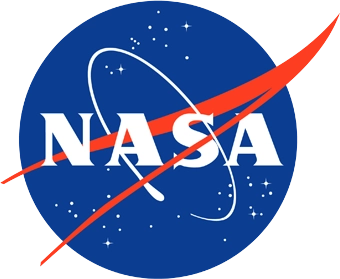Early Career Scientist Spotlight
Dr. Agnit Mukhopadhyay (he/him/his)
Space Physicist
Space Weather Laboratory (674)
Did you always know that you wanted to study space science?
My interest in space sciences came from a gradual foray into understanding how changes in the space environment could affect aeronautical instrumentation and satellite re-entry. My initial research background was in aerospace engineering, and after multiple internships and projects on aircraft design and low-speed aerodynamics, I started to work on heat dynamics of Low Earth Orbit (LEO) space capsule re-entry, where the ionospheric density plays an important role in determining the drag. One thing led to another, and within a year, I was in a PhD program training to study Earth’s magnetosphere-ionosphere system and the volatile interactions it has with the solar plasma.
What science questions do you investigate?
My research investigates the driving of aurorae (Northern and Southern lights) by multiple sources in the magnetosphere and ionosphere and the resultant impact of these charged particles on the upper atmosphere’s composition and resulting electrodynamics. This study has important space weather implications since aurora are important drivers of space weather activity. As part of my research, I use models to predict the strength and location of the aurora in both hemispheres and study how this would impact ground-based magnetic perturbations.
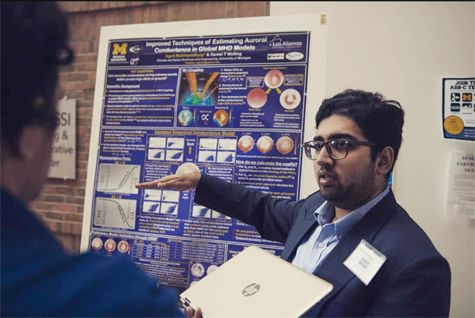
Credit: Agnit Mukhopadhyay
What is one research project that was particularly exciting, and why?
An extension of my work on developing models for auroral prediction was the study of the space environment from 41,000 years ago. We were trying to simulate geomagnetic conditions during a short-lived magnetic reversal (technically called a magnetic excursion) towards the end of the Holocene era (~50 – 30,000 years ago). According to data that was derived from rock and volcanic sediments, Earth’s magnetic field strength reduced to 4% of modern values and tilted severely during this period. Using space weather models and my auroral prediction tools, my simulation results found that the magnetosphere of Earth reduced in size substantially, while the auroral region rapidly wandered across multiple geographic regions in both the Northern and Southern hemisphere. This project was particularly exciting, because I got to collaborate with a broad spectrum of scientists and academics working on paleomagnetism, radiation physics and anthropogenic studies.
Where do you see yourself in the near future?
I think the importance of mapping geophysical data has increased multifold over the COVID-19 pandemic. With the emergence of maps-based apps like Google Geo, Amazon Prime Air, Apple Maps and/or any positioning-based apps, geophysical modelers need to look at visualizing incoming data from satellites, ground-based instrumentation and models in ways that are perceptive to the lay-person. I see myself transitioning to roles that would help design next-generation tools for mapping and geospatial visualization that would result in aiding the existing infrastructure used to study Earth while making way for future state-of-the-art tools.
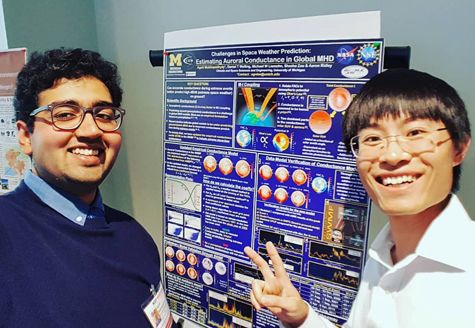
Credit: Agnit Mukhopadhyay
What was your first big research achievement?
My first big research achievement was in the field of aerospace engineering, where we were able to design a payload recovery device capable of recovering static aerostats and airships, if their contact to the ground was untethered. This project was my first foray into scientific research, and the device’s design was unique yet simple enough to attract funding from several private and defence agencies.
What do you enjoy the most about your job?
In my current position, I am really excited about getting the opportunity to pursue the investigation of different geophysical phenomena across the different ‘spheres’ of Earth. I am fortunate that I get to work with supportive mentors, advisors, and peers who are extremely helpful in giving shape to my ideas while providing enormous amounts of background material to easily deduce the feasibility of a project. That, and the opportunities to forge more such collaborations through conferences and colloquiua is something I enjoy enormously.
What do you like to do in your free time?
In my free time, I love to sing and record Indian classical songs. Music is a passion and I have trained as a classical vocalist and harmonium player. I am an amateur artist and have performed in smaller gatherings and occasions. I also try to record my instruments and vocals in my free time. I am also an avid foodie, and love to travel and learn about different cultures, cuisine, philately and numismatics.
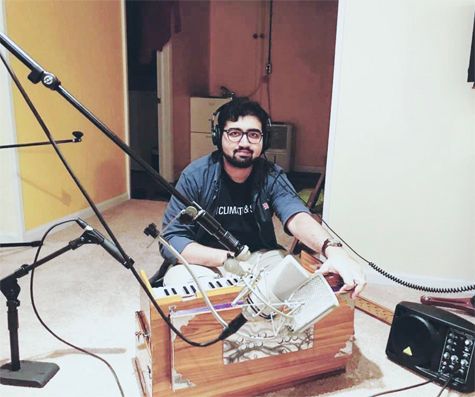
Credit: Agnit Mukhopadhyay
Biography
Home Town:
Calcutta, India
Undergraduate Degree:
B.Tech. in Aerospace Engineering, Punjab Engineering College, Chandigarh
Post-graduate Degrees:
M.S. in Aerospace Engineering, University of Michigan, Ann Arbor
M.S. in Climate and Space Sciences, University of Michigan, Ann Arbor
Ph.D. in Climate and Space Sciences and Scientific Computing, University of Michigan, Ann Arbor
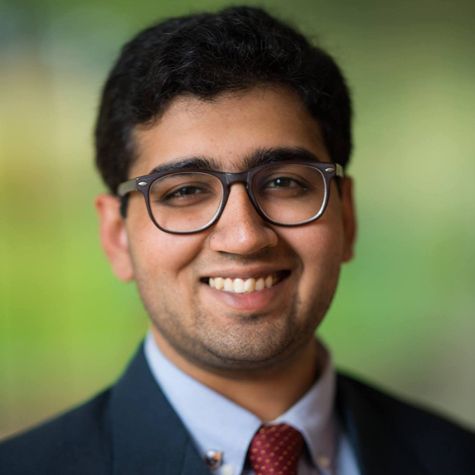
Link to Dr. Mukhopadhyay's GSFC Bio
